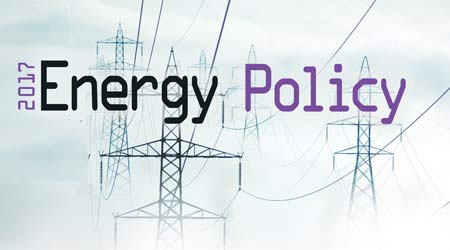States and Local Jurisdictions Will Continue To Lead on Energy Efficiency
Third of a four-part cover story looking at how Trump Administration policy may affect energy policy for the road ahead.
The groundswell of energy efficiency policies and strategies at the state and local level will likely persist despite federal unknowns.
“The momentum and the agenda at the city level has truly been a pathway that follows the constituencies in those cities,” says Jennifer Layke, global director of the World Resources Institute’s energy program, and manager of WRI’s global building efficiency network. “The federal government doesn’t have a lot of levers to pull on energy efficiency performance in cities, beyond equipment.”
In addition, pursuing energy efficiency and creating robust energy networks for commercial facilities has simply become part of best operating practice. “For the people who really understand buildings, it doesn’t really matter if there’s a lot of money coming from the federal government or not, because many states are into it (energy efficiency),” says James Newman, managing partner of Newman Consulting Group. “And that’s where it’s going to be. It’s going to be the states, the cities, the counties.”
Energy use benchmarking and disclosure
One area that has always gone on its own steam is energy benchmarking and disclosure legislation. Local and state jurisdictions continue to come on board with benchmarking legislation, none of it driven by the federal government.
“This is a market-led movement,” says Cliff Majersik, executive director of the Institute for Market Transformation. “I don’t think that changes on the federal level are likely to have a big impact.”
While some of the legislation only requires the disclosure of energy use information when the building is being sold, much more requires public disclosure. This is designed to create market pressure around energy efficiency.
“You’re in an environment where you have to compete for the best tenants, the best investors, in some cases the best employees,” says Majersik. “You want to win that competition.” Increasingly a building’s energy performance is coming into those equations.
Energy benchmarking disclosure is one of the biggest things BOMA International has been following on the state and local level, says John Bryant, vice president of advocacy, codes and standards with BOMA International. While energy benchmarking is something the organization has strongly supported in the past, he says, BOMA has concerns about the disclosure piece. “If a tenant has a high energy usage, whether data center or medical office, it could give the building a low score, which we don’t think is fair,” says Bryant.
Look to see the conversation around energy benchmarking continue to develop. Currently, all cities and states that require benchmarking use Energy Star’s Portfolio Manager as the primary reporting tool. Impact to the EPA could have ramifications for Energy Star, though this is seen as unlikely by most in the industry.
Picking Up the PACE
Another energy efficiency-related measure that’s not coupled to the federal government is PACE, property-assessed clean energy financing. Newman says he only expects PACE to get bigger. “That is going to be paying for a lot of these deep energy retrofits that take more than five or six years to pay back,” he says. “When the building gets done, this becomes an off balance sheet tax assessment. It has some tremendous advantages for doing the kinds of things that need to be done.”
Keeping things local is just fine for Allan Skodowski, managing senior vice president and director or LEED and sustainability services at Transwestern. “Now we have different programs like PACE that are popping up, but there’s no federal funding that’s tied to that. That’s all local or state,” he says. “I’m happy if the federal government stays out of trying to build any incentive programs that are really in any way something that is a one-size-fits-all for the country. Different states have different energy needs.”
Learn more about PACE on FacilitiesNet.com.
Related Topics:















